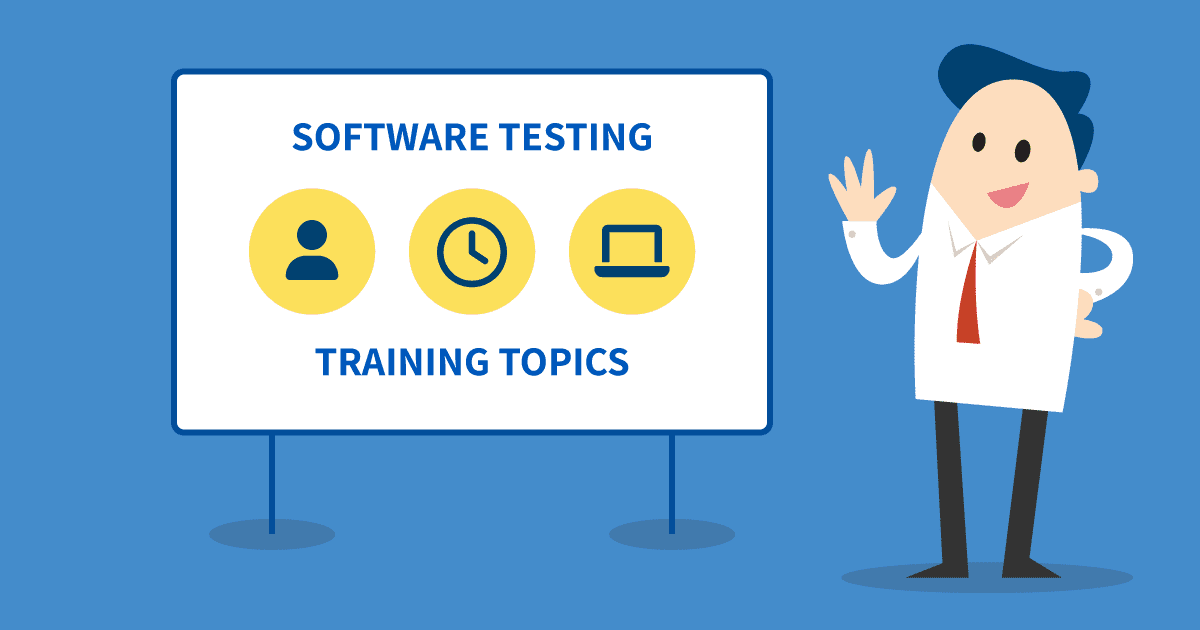Becoming a successful software testing trainer starts with knowing which software testing training topics to include in your materials.
What comes to mind when you first consider becoming a software testing trainer? You might have questions about how and where to start, how to create content, where to register as a trainer, and which are the best software testing training topics to include.
This post looks at two essential components in high-value training: the content and topics. They are primary because when a trainee decides to enroll for training, they first ask about the contents, then the trainer, duration, and cost.

What to Consider when Creating Training Material
A successful trainer reaches a large audience and successfully retains trainees for further study. Consequently, there are some key points to keep in mind when creating software training material.
- Know your audience: Before creating the plan or training documents, think about your intended audience. The training material should cater to different trainee levels like beginners, intermediate or advanced.
- Determine the duration of the training: Training can be for a few hours or many days. The content and topics you choose to create materials for will depend on the overall training duration. The duration helps finalize the content, whether the aim is to concentrate on high-level information or present detailed information about the subject.
- Decide if the training will be online, offline, live, or self-paced: Participating in training these days has become relatively easy for people worldwide. Although the trend for live or downloadable online training does not require attendees to be available in person, online content can present challenges. Trainers must be aware of platforms and tools for content creation, communicate well, and be suitably presentable. An interactive live session can vary a lot compared to self-paced training. When creating a self-paced learning course, the information in the material needs to be highly detailed. It should cover different scenarios with, preferably, real-life examples since attendees will watch these at their own pace independently and without any interaction.
Which software testing training topics to include
Software testing is a broad domain, so it’s impossible to cover everything in just one course. Instead, giving a brief overview of the selected topic should be the main focus of any software testing training, plus information about how and when to test. Here are some examples of topics to cover.
- Introduction to Software Testing: Like all training, the content should start by explaining the primary topic, which in this case would be: What is software testing? It’s necessary to define, but avoid using difficult-to-understand definitions because these will not be helpful to the audience. Adding examples to help give meaning is generally more valuable.
- Introduction to SDLC, Agile, and Scrum: A brief introduction to the Software Development Lifecycle is essential because it helps trainees understand where software testing fits in the whole process. Another point to cover is the industry’s transition from the earlier Waterfall method to Agile and how testing works with the Agile model. Including an overview of Scrum will also benefit your learners.
- Types of Software Testing: Going into detail on all kinds of testing is not feasible in one training, but training on software testing must provide a high-level idea and description of the different kinds of testing involved, like Functional Testing, Non-Functional, Unit, Integration, System, User Acceptance, Performance, Security, etc.
- Bug Lifecycle: Bugs and testing go side by side, so when we talk about testing, it is essential to have an overview of bugs, defects, and issues. Also, include how to create and report bugs and the overall standard bug lifecycle.
- Test Documentation: A brief introduction to Test Documentation like Test Plan, Test Strategy, Test Scenarios, Test Cases, Traceability Matrix and Defect Matrix is also a good inclusion in the Software Testing Training.
- User Stories: Training must also include information on user stories and their importance as part of Agile. User stories are the center of agile methodology because they give testers a clear understanding of user needs.
- Manual and Automation Testing: Automation and manual testing topics training appear in almost all software testing training. People interested in understanding software testing are generally curious to know what manual and automation testing are and how they differ. As a trainer, it is good to include the benefits and limitations of both, so learners understand their importance which will help them decide which to focus on.
- Q&A: All training requires some time at the end reserved for discussion. The speaker or presenter must encourage and address questions from the attendees.
Conclusion
This post summarizes some essential points to help you start your journey toward becoming a software testing trainer. High-quality training will bring in many learning opportunities and can also enhance your skills as you develop as a software testing trainer. Therefore, the objective of every trainer must be to create content that generates interest from the attendees. In addition, they need to clarify basic concepts, which can help learners make better decisions about their software testing careers.
